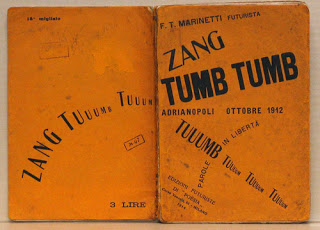Examples of Modernist Graphic Design
Kandinsky's 60th birthday poster by Herbert Bayer
Recognised as Modernist in the tilted nature of the typography, and it's clear legibility exhibits a key feature of Modernism, where it's only aim is to convey a message. The bold and minimalist nature of the colour scheme and layout of the poster, is enough to attract a viewer to read the smaller text. The majority of the text is in uppercase and so is in keeping with the grid-like layout.
"From the beginning, Modernism had the urgency of utopianism: to make a better world by design"- Massimo Vignelli
Bauhaus poster
There is an obvious current of structure and symmetry in this poster, fitting with the reputation the Bauhaus has for creating functional designs. While the colour scheme falls into the modernist bracket, I do think that a lot more thought has gone into layout than content which in my opinion takes away from the modernity of it.
"Modernism was never a style, but an attitude. This is often misunderstood by those designers who dwell on revivals of the form rather than on the content of Modernism" - Vignelli
This example seems to have exaggerating the concept of Modernist graphic design. There is an obvious structure to the layout of it, kept simple and efficient. Form clearly follows function in this design, with the page split into three sections to accomodate each language (German, English and French)
"Modernism was and still is the search for truth, the search for integrity, the search for cultural stimulation and enrichment of the mind" - Vignelli
COBETOB
Clearly created in the Communist revolution, this example is simple in it's typographic content and effective in it's repetitive imagery. It has an experimental quality with the hand montage and the tilted typography making the whole thing knocked on it's side, unlike much else that would have been seen at the time. The experimental aspect is very in keeping with modernist works and fits the criteria well.
"The revision of many of the Modernist issues have enriched our perception and have contributed to improving the quality of work" - Vignelli
The London Underground Map is an ideal example of Modernist Graphic Design. While the map isn't an accurate representation of the Underground system it is very close and has been laid out in a way which is much easier to follow than the original version. The colour code makes the whole map universally understandable.
"I value, endorse and promote the continued relevance of the Modern movement as the cultural mainstream of our century" - Vignelli
Examples of Post-Modern Graphic Design
Neville Brody's The Face magazine
The design is a burst of colour compared to any Modernist works, the whole spread exhibiting a collage and doodling effect. Brody's very distinct habit of including variation in typefaces and the mixture of structured content with the sharp edges show the design to be overpowering the content, perhaps taking away from it. While it is in-keeping with elements of Post-Modernism, it seems very exaggerated.
"The lack of profound ideology eventually brought Post-Modernism to it's terminal stage" - Vignelli
Beethoven poster by Michael Cronin
This poster has a minimalist but decorative approach, the odd combination of colours making it quite playful and post-modernist. The lines on the manuscript paper are inconsistent and cut off in the middle of the page, consistent with the pop art nature of the blue image. However, the image seems quite fickle and upon looking at other designs of posters for Beethoven performances, it has little consistency with them, this image could easily have been following the trend.
"Modernism's inherent notion of timeless values as opposed to transient values still greatly appeals to my intellectual being" - Vignelli
Barbara Kruger's book cover
The overlapping and 'broken apart nature of the typography in this design is typical of post-modernism in design. However the colour schemes fairly neutral and reminiscent of pro-Communism designs, it appears as though this cover looks more post-modern than each feature actually is. In spite of this, the image looks all together quite random with the placement of the type and gives no background or explanation with it.
"Much still has to be done to convince industry and government that design is an intergral part of the production process and not last-minute embellishment" - Vignelli
Barney Bubbles trademark BLOCKHEAD
This design breaks traditional typography rules and has a humorous approach, using the letters to convey the word. Although this is a simple monochromatic design, the layout and typography are typically post-modern, altering the size and natural structure of a word.
This design lacks "truth, integrity, cultural stimulation or enrichment of the mind" in the same way that Vignelli describes Modernism.

























.jpeg)
.jpeg)



.jpeg)
.jpeg)



.jpeg)
.jpeg)

















